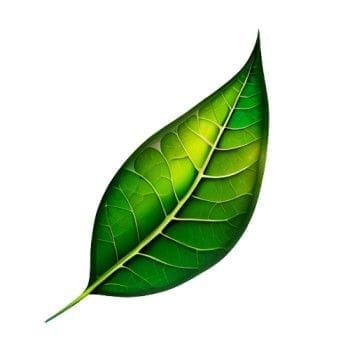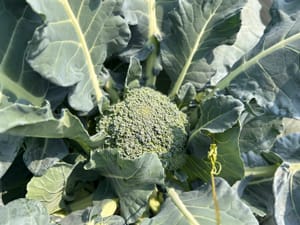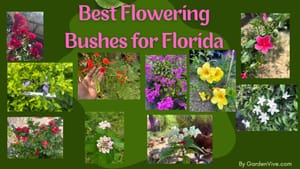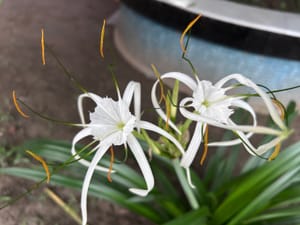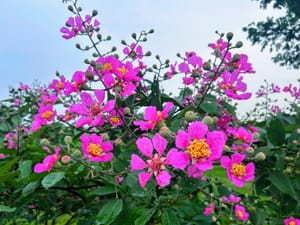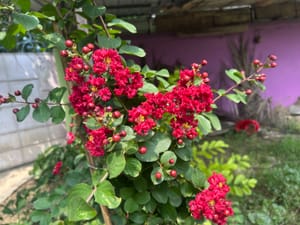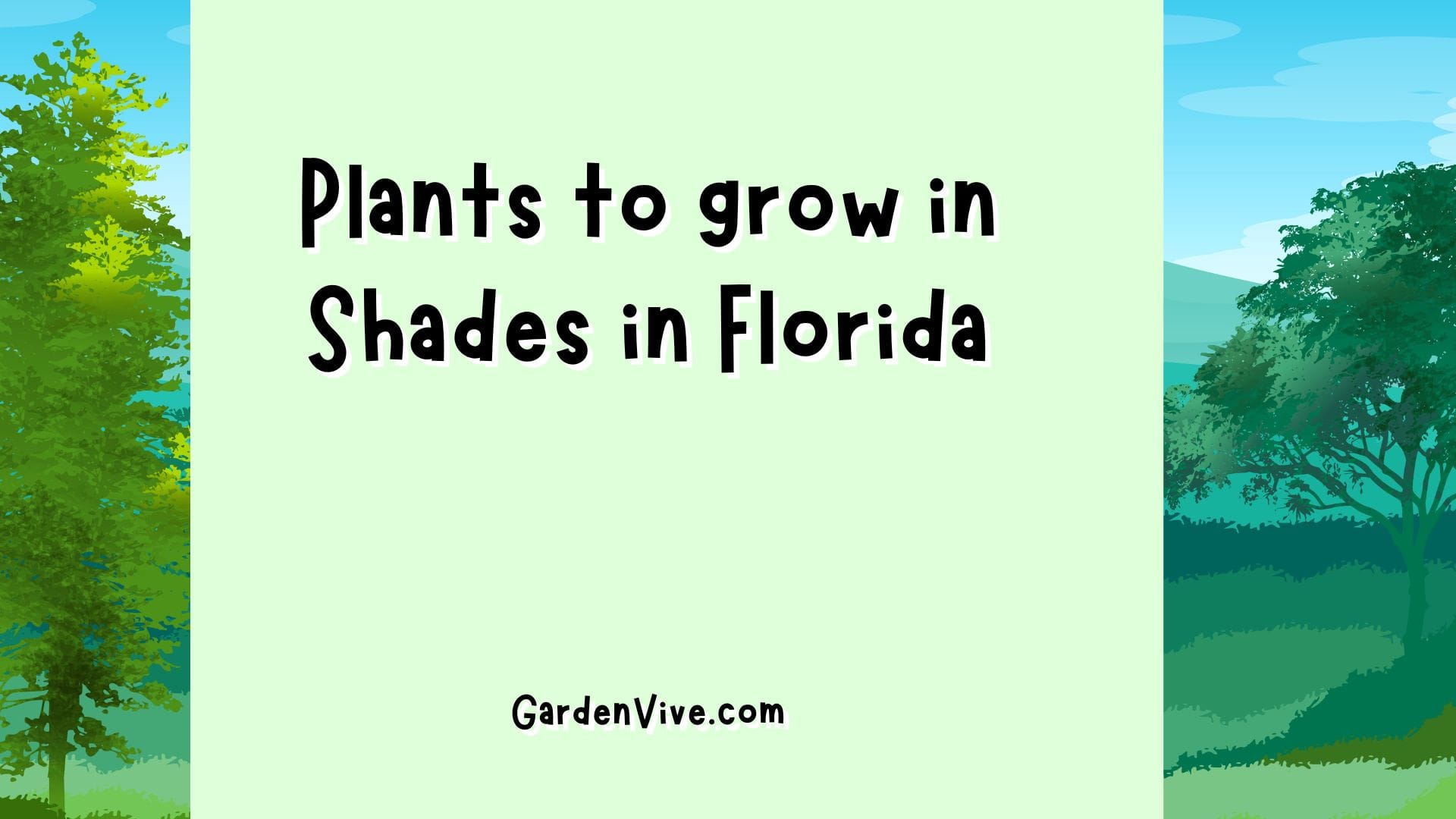
I often hear people say, " This portion of your garden is shaded; you can't grow anything here." Each plant has its own growing environment, and it will perform best if planted in its preferred environment. In this article, I am sharing a list of plants you can easily grow in partial shade or full shade in Florida.
Florida is not a small state, the North part's climate differs from South Florida. To make this list useful for all Florida gardeners, I have mentioned if the plant can grow well in Central, North, or South Florida (besides every plant name).
It's hard to find plants and trees that actually perform well in shady places. My list includes many plants that do well in sunlight but can also grow well in partial shade. I've made sure to include these versatile plants.
Fruit trees for shaded area
| Fruit Tree | Region | Shade Tolerance | Max Height | Min Harvest Time | Harvesting Season | Maintenance Difficulty |
|---|---|---|---|---|---|---|
| Surinam Cherry | North, Central, South | Partial Shade | 20 ft | 1-2 years | Spring, Fall | Low |
| Loquat | North, Central, South | Partial Shade | 20-30 ft | 2-3 years | Spring | Moderate |
| Mulberry | North, Central, South | Partial to Full Shade | 30-50 ft | 1-2 years | Late Spring | Moderate |
| Blackberry | North, Central | Partial Shade | 6-10 ft | 1-2 years | Summer | Low |
| Blueberry | North, Central | Partial Shade | 4-6 ft | 1-2 years | Spring, Summer | Moderate |
| Jaboticaba | Central, South | Partial to Full Shade | 15-30 ft | 5-8 years | Spring | High |
| Avocado | Central, South | Partial Shade | 30-40 ft | 3-4 years | Fall, Winter | High |
If you do not have a large space, go for their dwarf variants.
A good recommendation for you if you are a fruit tree grower: Best fruit trees to grow in Florida
Vegetable plants to grow in shaded areas
| Vegetable | Region | Shade Tolerance | Planting Season | Harvesting Time (Days) |
|---|---|---|---|---|
| Spinach | North, Central | Partial Shade | Fall, Winter | 40-50 |
| Kale | North, Central, South | Partial Shade | Fall, Winter | 50-65 |
| Swiss Chard | North, Central, South | Partial to Full Shade | Fall, Winter, Spring | 55-60 |
| Lettuce | North, Central | Partial Shade | Fall, Winter | 30-45 |
| Broccoli | North, Central | Partial Shade | Fall, Winter | 70-100 |
| Carrots | North, Central | Partial Shade | Fall, Winter | 70-80 |
| Bitter Gourd | Central, South | Partial Shade | Spring, Summer | 60-70 |
| Beets | North, Central | Partial to Full Shade | Fall, Winter | 50-60 |
| Green Onions | North, Central, South | Partial Shade | Fall, Winter, Spring | 30-50 |
| Collard Greens | North, Central, South | Partial Shade | Fall, Winter | 55-75 |
If you are a serious gardener, this planting schedule might be a good resource for you: Florida Planting Calendar
Flowering Plants to Grow in Shade
| Plant Name | Region | Shade Tolerance | Bloom Color(s) | Blooming Season(s) | Planting Season | Plant Type | Maintenance Level |
|---|---|---|---|---|---|---|---|
| Azalea | North, Central | Partial Shade | Pink, White, Red | Spring | Fall | Perennial | Moderate |
| Begonia | North, Central, South | Partial to Full Shade | Red, Pink, White, Orange | Summer to Fall | Spring | Annual | Low |
| Camellia | North, Central | Partial Shade | Pink, White, Red | Fall, Winter | Fall | Perennial | Moderate |
| Impatiens | North, Central, South | Partial to Full Shade | Red, Pink, White, Orange, Purple | Spring to Fall | Spring | Annual | Low |
| Hydrangea | North, Central | Partial Shade | Blue, Pink, White, Purple | Spring to Summer | Spring | Perennial | Moderate |
| Caladium | Central, South | Partial to Full Shade | White, Red, Pink (foliage color) | Summer (primarily foliage) | Spring | Annual | Low |
| Bleeding Heart Vine | Central, South | Partial Shade | Red, White | Spring to Summer | Spring | Perennial | Moderate |
| Gardenia | North, Central, South | Partial Shade | White | Late Spring to Summer | Spring | Perennial | High |
| Fuchsia | North, Central | Partial to Full Shade | Pink, Purple, White | Summer | Spring | Annual | Moderate |
I have grown gardening in a really shady area (Like no direct sunlight at all). The plant is healthy and has lots of leaves. But the flower is really small in number. You need to provide them with a little bit of sunlight. So if your area is fully shaded, it's better not to go for it.
If your landscape is sloppy you can read: best flowering plants to grow on slopes
Privacy Shrubs for Hedges for Shady area
| Plant Name | Region | Shade Tolerance | Height Range | Flowering | Bloom Color(s) | Maintenance Level |
|---|---|---|---|---|---|---|
| Wax Myrtle | North, Central, South | Partial Shade | 6-20 feet | No | - | Low |
| Sweet Viburnum | North, Central, South | Partial Shade | 12-20 feet | Yes | White | Moderate |
| Podocarpus | Central, South | Partial to Full Shade | 8-15 feet | No | - | Low |
| Florida Anise | North, Central | Partial Shade | 6-15 feet | Yes | Red | Moderate |
| Clusia | Central, South | Partial to Full Shade | 5-10 feet | No | - | Low |
| Firebush | Central, South | Partial Shade | 6-12 feet | Yes | Red, Orange | Low |
| Simpson's Stopper | Central, South | Partial Shade | 6-15 feet | Yes | White | Low |
| Japanese Yew | North, Central | Partial to Full Shade | 6-10 feet | No | - | Moderate |
| Ligustrum | North, Central, South | Partial Shade | 6-12 feet | Yes | White | Moderate |
If you are from Central Florida, you can check Fast growing shade trees for zone 9 and fast growing hedges (privacy) for zone 9
Herbs for shady places - Florida
| Plant Name | Region | Shade Tolerance | Height Range | Growth Habit | Uses | Maintenance Level |
|---|---|---|---|---|---|---|
| Mint | North, Central, South | Partial to Full Shade | 12-18 inches | Perennial | Culinary, Medicinal | Low |
| Parsley | North, Central, South | Partial Shade | 8-12 inches | Biennial (grown as annual) | Culinary | Low |
| Chives | North, Central, South | Partial Shade | 12-18 inches | Perennial | Culinary | Low |
| Lemon Balm | Central, South | Partial to Full Shade | 12-24 inches | Perennial | Culinary, Medicinal | Low |
| Cilantro | North, Central, South | Partial Shade | 12-24 inches | Annual | Culinary | Moderate |
| Dill | North, Central | Partial Shade | 18-24 inches | Annual | Culinary | Moderate |
| Sorrel | North, Central, South | Partial Shade | 12-18 inches | Perennial | Culinary | Low |
| Thyme | North, Central, South | Partial Shade | 6-12 inches | Perennial | Culinary, Medicinal | Low |
| Basil | Central, South | Partial Shade | 12-24 inches | Annual | Culinary | Moderate |
There are a lot of plants in this list, thus I am not including images.
Pollinator attractors
| Plant Name | Max Height | Attracts | Blooming Season | Perennial/Annual |
|---|---|---|---|---|
| Beautyberry (Callicarpa americana) | 6 feet | Bees, butterflies, birds | Summer - Fall | Perennial |
| Firebush (Hamelia patens) | 10 feet | Hummingbirds, butterflies | Spring - Fall | Perennial |
| Simpson's Stopper (Myrcianthes fragrans) | 10 feet | Bees, butterflies, birds | Spring - Summer | Perennial |
| Walter's Viburnum (Viburnum obovatum) | 15 feet | Butterflies, birds | Spring | Perennial |
| Climbing Aster (Ampelaster carolinianus) | 10 feet | Bees, butterflies | Fall | Perennial |
| Corkystem Passionflower (Passiflora suberosa) | 3 feet | Bees, butterflies | Summer - Fall | Perennial |
| Twinflower (Dyschoriste oblongifolia) | 1 foot | Bees, butterflies | Spring - Summer | Perennial |
All of these can perform well in shades.
Ground covering plants to grow in Shades
| Plant Name | USDA Growing Zones | Type |
|---|---|---|
| Hosta | 3-9 | Ornamental |
| Lily of the Valley | 3-8 | Flowering |
| Ajuga | 3-10 | Creeper |
| Sweet Woodruff | 4-8 | Flowering |
| Pachysandra | 4-8 | Ornamental |
| Ferns | 3-10 | Ornamental |
| Deadnettle (Lamium) | 3-8 | Creeper |
| Heuchera (Coral Bells) | 4-9 | Flowering |
| Vinca Minor (Periwinkle) | 4-9 | Creeper |
| Wild Ginger | 4-9 | Ornamental |
| Hellebores | 4-9 | Flowering |
| Japanese Spurge | 4-8 | Ornamental |
| Epimedium | 5-8 | Flowering |
| Carex (Sedge Grass) | 4-10 | Grass |
| Golden Creeping Jenny | 4-9 | Creeper |
| Tiarella (Foamflower) | 4-9 | Flowering |
| Brunnera (Siberian Bugloss) | 3-8 | Flowering |
| Trillium | 4-9 | Flowering |
| Barrenwort | 5-8 | Ornamental |
| Asarum Europaeum (European Wild Ginger) | 4-7 | Ornamental |
Request to my readers
It took a lot of time to organize this list. If you liked what you read, subscribe to my site to motivate me to bring more articles like this. (It's Free!)
